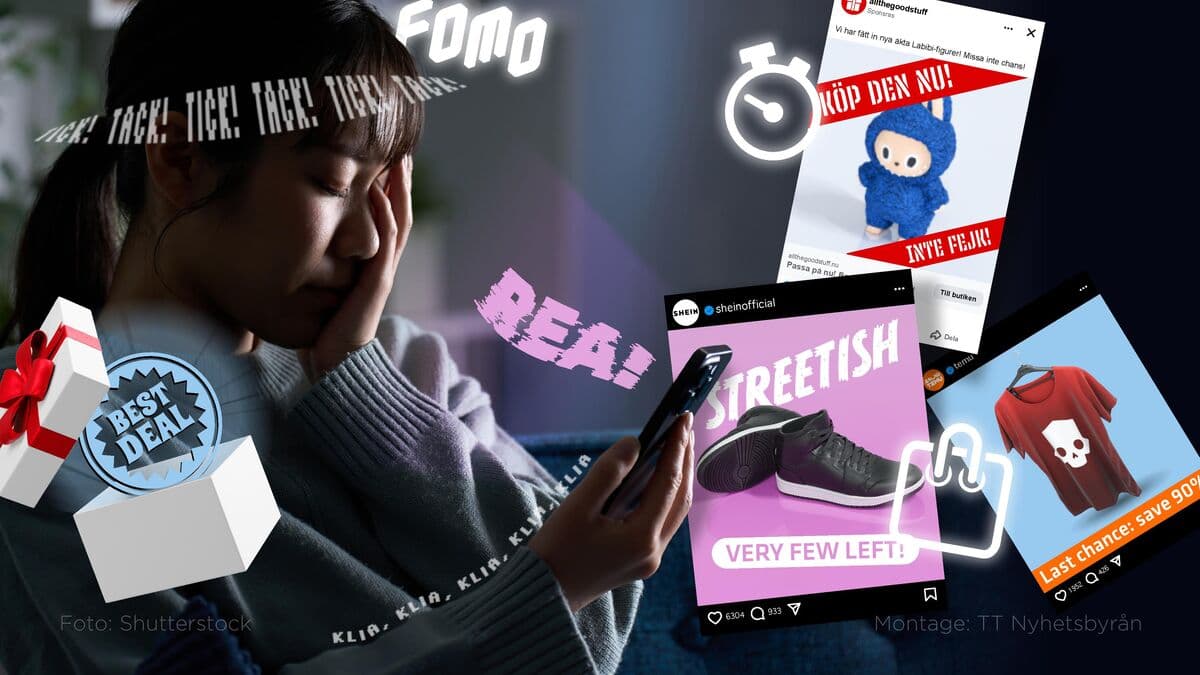The Swedish Society for Nature Conservation has investigated how much large fashion companies use so-called purchase triggers and identified eleven different triggers. Some of the surveyed sites, such as Nelly, Boozt, Zalando, and Shein, use almost all of them, while others, such as H&M, only use a few.
A common denominator is that they are very stressful for the customer. It can be a clock ticking down, it can be someone saying that there are only a few things left in the cart or in stock, says Beatrice Rindevall, chairman of the Swedish Society for Nature Conservation
AI tailors this based on our weaknesses. It becomes very psychologically manipulative.
Every third post
For those who are active in social media, it is difficult to avoid purchase offers. According to the report, every third post on Instagram encourages purchase.
In a complementary survey, teenage girls in their upper teens have been asked to screenshot all purchase prompts they receive in a day.
They thought they might have to do it sometime, but it was all the time. Their entire photo album is filled with screenshots of purchase triggers.
It can be difficult to avoid something that is designed to lure us in and urge us to buy. Beatrice Rindevall's advice is to keep a cool head and ask yourself if what you want to buy is really something you need. The Swedish Society for Nature Conservation would rather see stricter legislation.
Today, marketing legislation only regulates what is said at the time of purchase. The purchase triggers that led to the purchase – such as countdown clocks, claims that few are in stock, personal recommendations, and offers of free shipping when you buy over a certain amount – are not included.
All triggers in social media, they are not included in this legislation. We see that politics needs to step in and demand that they take responsibility.
Max five garments
The purchase craze is not only harmful to one's own economy. The Swedish Society for Nature Conservation has previously investigated how many new clothes we can buy to reach the Paris Agreement's goals. The answer is a maximum of five garments per year. We consume much more.
It's a huge problem for environmental issues and climate issues. But it's also people who work, it's environmental toxins in production, it's water that affects people in the surrounding areas. So it's about climate, environment, and people.
1. Hurry or time shortage – for example, countdown clock or time-limited sale.
2. Scarcity – only a few left in stock, soon sold out, hurry up.
3. Popularity – 20 people are looking at this, most bought items, in 20 people's shopping cart, bestsellers, trending.
4. Exclusivity – only members, only online, limited offer, discount for new customers.
5. Inspiration – you might also like, style with, related products, others also bought, similar products.
6. Low risk – free shipping, buy now – pay later, free/easy return, fast delivery.
7. Incentives/offers – shop more to get free shipping, sign up for the newsletter to get a discount, download the app to get a discount, become a member and get a discount, invite a friend and get a discount.
8. Shortcuts – buy now button, quick buy button.
9. Lock-in/lock-ins – save favorites, wish list, subscribe to newsletter, must log in (cannot shop as a guest), notify me when the product is in stock.
10. Good deal – 2 for 1, discount code, sale, special offers, conditional offers, discount.
11. User-generated content – images, reviews, and ratings.
Of the companies reviewed, Nelly, Boozt, Zalando, and Shein used almost all triggers – nine out of eleven, while H&M was the lowest with four.
Source: The Swedish Society for Nature Conservation





